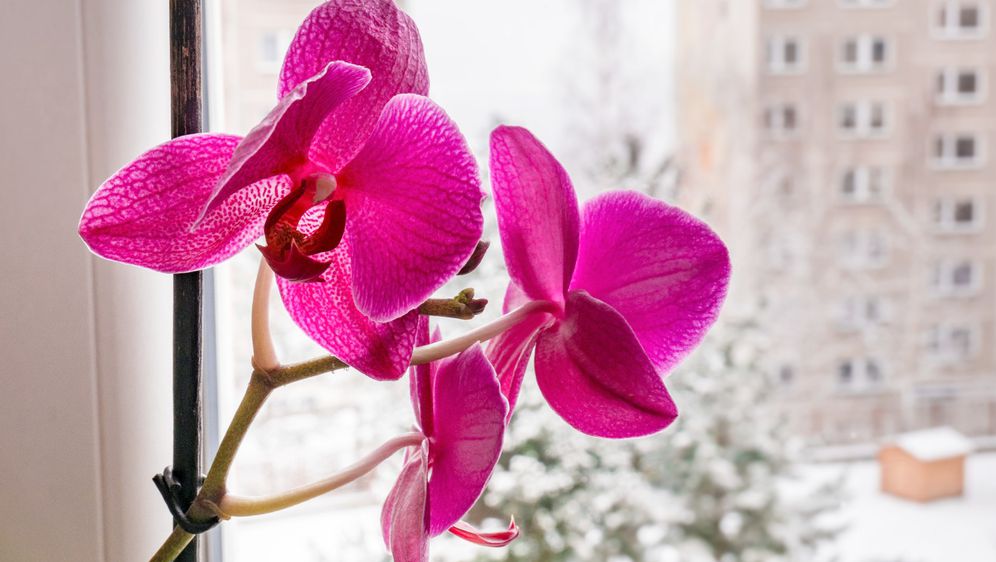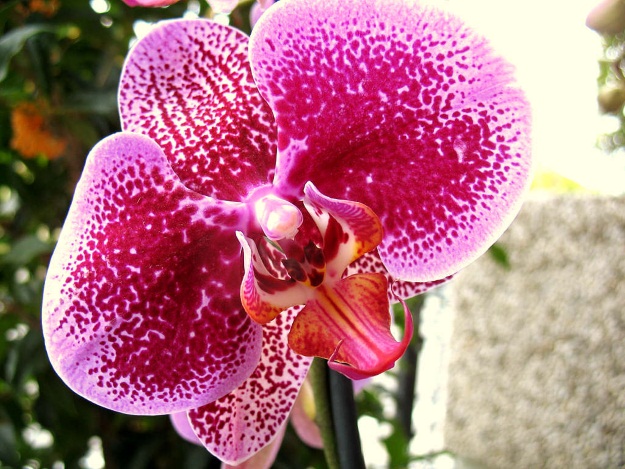Orchids are naturally shade-loving plants, due to the fact that many of them originate from rainforests where there is a heavy tree canopy above them, often giving very dense shade on the forest floor. The varying amount of sunshine available at different levels of the forest means that different types of orchid need different levels of light. Little plants that may be living on the very tips of the trees’ branches will be exposed to a lot more light than those growing in the lower forks of a tree, in the shade of the leaves above. And these are just the epiphytic types; there may also be terrestrial orchids growing in the ground below the trees in an even more shaded environment.
Just like other plants, though, orchids require some light to survive, and we need to look at the particular types of orchid in turn in order to get the light levels just right.
Light-loving Orchids
Usually the plants with the toughest leaves are those that can take the strongest light. These include the cattleyas, laelias and the resulting hybrids, and also orchids such as vandas, ascocentrums, rhyncostylis and angraecums which all have thick, leathery leaves. These plants need good light because light is particularly important in the flowering of orchids. If the plant does not receive enough light, then flowering may be inhibited and darker, lusher foliage may be produced instead. The plants listed above all require warm temperatures, but light is just as important for many cool-growing types.


Cymbidiums, for instance, also need a lot of light as some of these can be found growing in almost full sun in their natural habitat. A common problem with these plants is that they are kept in the house where there is just not enough light available, so they produce a lot of leaves but no flowers.
Shade-loving Orchids
Shade-loving orchids often have softer, paler green leaves that will easily turn yellow or burn if too much light is given. A good example is Miltoniopsis, which has soft, light green foliage and needs more shade than other orchids. Terrestrial orchids that require shade include the slipper orchids (Phragmipedium and Cypripedium) and the paphiopedilums, which often have motded foliage to camouflage them in the dappled light on the forest floor.
In general, orchids prefer a diffused light, especially in summer when the sun is at its strongest. If the plants are placed in bright sun, the leaves can easily be scorched in a very short time. This is irreparable damage, which in severe cases can kill the plant. During winter, the sun’s rays are not strong enough to harm the plants, so no extra shading is necessary; in fact, you need to give the plants as much light as possible in winter as the weather can be so dull.
Indoor Orchids
If growing orchids in the home, shade may need to be provided, particularly if they are growing in a bright, sunny window. A net curtain may be enough; if not, move them back into the room a little on the brightest days. Alternatively, place a piece of greenhouse shade netting between the plants and the window. You could also move your orchids to a shady window in summer, moving them back to the brighter position for the winter.









